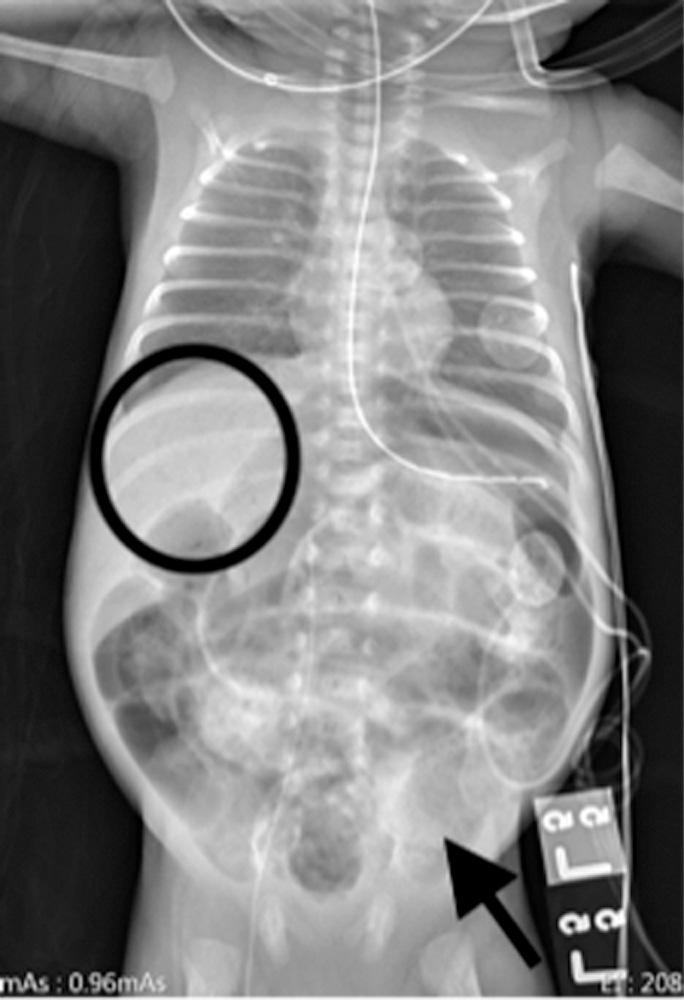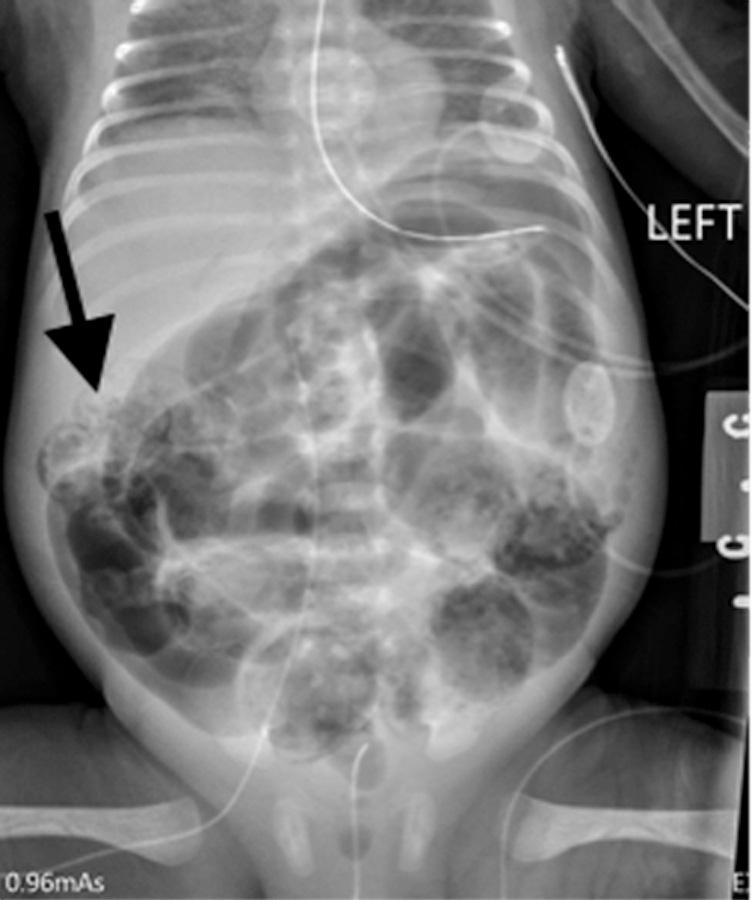Physical Address
304 North Cardinal St.
Dorchester Center, MA 02124
Infants in the neonatal intensive care unit (NICU) are faced with several debilitating diseases that significantly increase the rates of morbidity and mortality. Many of these illnesses are not greatly understood, and many theories have been postulated in terms of pathogenesis and diagnostic and treatment approaches. One of these diseases is necrotizing enterocolitis (NEC), which largely affects premature infants by causing intestinal gut necrosis. There is a strong relationship with gestational age and birth weight, where younger gestational ages and extremely low birth weight (ELBW) neonates are at the highest risk of developing NEC. The disease occurs in approximately 7% of neonates with a birthweight between 500 and 1500 g ( ). Mortality from NEC is dependent on the amount of bowel involved, the severity of the disease, and associated comorbidities ( ). There is a spectrum of diagnostic criteria and treatment options based on the severity of the disease. Infants who survive are at an increased risk for poor neurodevelopmental outcomes in addition to morbidities, such as short gut syndrome, requiring long-term intravenous nutrition ( ). Due to the continued poor understanding of NEC across the world, much research has been devoted to dissecting NEC and determining ways to prevent the disease.
Baby boy MD (1400 g) was born at 27 week’s gestation via cesarean section due to preterm premature rupture of membranes for 4 days and concern for placental abruption. Pregnancy was complicated by maternal history of immune thrombocytopenia, factor V Leiden heterozygosity, smoking, mild asthma, and gestational diabetes. The mother received latency antibiotics and a complete antenatal steroid course before delivery. Apgar scores were 5 and 9 at 1 and 5 minutes of life respectively. At the time of the delivery, he had respiratory failure requiring intubation. He was admitted to the NICU for prematurity, respiratory distress syndrome, evaluation for sepsis and nutritional support. He received three doses of surfactant and 2 days of antibiotics; blood cultures for initial sepsis evaluation remained negative. Respiratory support was weaned over 2 weeks, but he remained on oxygen between 30% to 40% via a high-flow nasal cannula. Enteral trophic feeds of breast milk, 20 mL/kg/d, were started on day of life 2. Feeds were slowly advanced over the course of 2 weeks, reaching full feeds of breast milk fortified with human milk fortifier to reach 24 kcal/oz at 150 mL/kg/d.
On day of life 14, he developed abdominal distension, tenderness, and firmness on physical examination. The abdominal circumference increased by 4 cm within a 6 hr period. He had one episode of nonbilious, nonbloody emesis and hypoactive bowel sounds.
What should be the next steps to evaluate the neonate’s signs and symptoms?
Abdominal ultrasound
Electrolyte panel
Upper GI series
Abdominal x-ray
D. Abdominal x-ray should be obtained next to evaluate the gut. The abdominal x-ray is time efficient and illuminates changes within the bowel, including bowel dilation, thickening bowel wall, and free air under the diaphragm. Abdominal x-ray is the gold standard imaging to identify pneumatosis, which is highly suggestive for NEC.
Enteral feeds were held, a sepsis evaluation was completed, and an abdominal plain film was obtained. The laboratory studies revealed a white count of 13,600/mm 3 with 25% mature neutrophils and 29% band forms. The hemoglobin concentration was 12 g/dL and platelets 332 × 10^3/L. The C-reactive protein (CRP) remained under 3 mg/L. A blood culture was obtained and vancomycin and gentamycin were started. Arterial blood gas, lactate, and serum electrolytes were within normal limits. The abdominal plain film x-ray revealed abnormal diffuse bowel dilation, pneumatosis within the right and left lower quadrants with portal venous gas ( Fig. 22.1 ). With these findings, he was made NPO, gastric decompression was begun with a nasogastric tube to low intermittent suction, and surgery was consulted for an evaluation.

What clinical scenario is most concerning for NEC?
A 5-day-old 23-week gestational age infant with bilious nasogastric output who has never initiated enteral feeds
A 2-day-old term infant with abdominal distension and tenderness with no stool output
A 3-week-old 28-week gestational age infant with abdominal distension and discoloration, recent history of multiple small episodes of nonbilious emesis, with normal stools
A 5-week-old 24-week gestational age infant with respiratory failure, significantly decreased urine output, hypotension, and a history of previous urinary tract infections
C. Necrotizing enterocolitis typically presents in premature infants initiated on enteral feeds. Clinically they may start to show signs of poor tolerance of feedings and changes in the abdominal examination. Stools may become bloody, but in the setting of NEC, stools may remain normal. NEC presents with several different signs and symptoms, not limited to the gastrointestinal system, which can make the diagnosis difficult. Early detection is important, and an investigative workup should be initiated when there are any concerns for NEC.
Despite rapid intervention, including holding enteral feeds and starting intravenous nutrition, gastric decompression, antibiotic coverage, and serial abdominal x-rays, 2 days after the diagnosis of NEC, the infant developed recurrent episodes of apnea with persistent desaturations requiring an initial increase of respiratory support to continuous positive airway pressure (CPAP) then to full ventilator support requiring intubation. Just before intubation, an arterial blood gas was notable for significant mixed respiratory and metabolic acidosis (pH 6.98, P co 2 62, PaO 2 47, HCO 3 − 14.6, base excess −17). Other laboratory studies were significant for thrombocytopenia (platelets 36 × 10^3/L), a decrease in hemoglobin concentration to 10 g/dL with leukopenia (3400/mm 3 ), mature neutrophils of 35%, and bands increasing to 32%. On physical examination after intubation, the abdomen appeared bluish in color with significant distension, and no active bowel sounds. An abdominal x-ray demonstrated a persistent fixed loop of bowel ( Fig. 22.2 ). Due to this clinical decompensation, he underwent an exploratory laparotomy. Patchy necrotic bowel was identified within the mid-small bowel and terminal ileum. Both segments were resected and a jejunostomy was created allowing the infant time to heal.

Become a Clinical Tree membership for Full access and enjoy Unlimited articles
If you are a member. Log in here